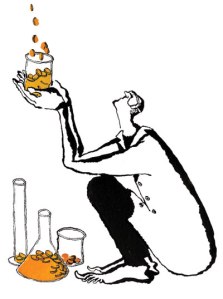by Anneliese Poetz, KT Manager, NeuroDevNet
In a recent blog post we told you about the development of a “Hybrid” tool that combines aspects of KT Planning with principles of project management. While this tool is appropriate for use by any researcher or trainee, we primarily developed it for use by NeuroDevNet’s 4 High Impact Projects (HIPs). The HIPs were chosen from existing NeuroDevNet research projects after the Research Management Committee directed that NeuroDevNet focus on 4-5 projects that had the “highest potential for creating impacts on diagnostics, interventions and services” during Cycle II. The idea is that by working closely with a small number of projects we can maximize the chances we will have specific examples of how we have achieved impact during Cycle II, to best position NeuroDevNet for Cycle III renewal. The process took several months, and began with a call to PIs to ask them to select projects within their programs that would fit the criteria to become a HIP. The KT Core made recommendations and the final High Impact Projects were approved by Dan Goldowitz, Scientific Director for NeuroDevNet.
We provided the 4 HIPs with the Hybrid tool to use for drafting their KT plans for the next 5 years (Cycle II for NeuroDevNet). Over the course of this summer, David Phipps (KT Lead, NeuroDevNet) and I met with 3 out of the 4 HIP project teams for 1.5-2 days in-person to review their KT Plan with them and collaboratively refine it as needed.
This is exciting for NeuroDevNet’s KT Core, because it is the first time there have been KT practitioners (KT supports within an organization) embedded within project teams in this way. The information gathered within the Hybrid KT Planning tool will provide the information needed to manage the timelines and milestones for these KT plans during Cycle II. The aim is to work with project teams so that by the time we write our application for Cycle III funding we will have concrete examples of impact.

Screening & Intervention (FASD) High Impact Project team members working on KT Plan with NeuroDevNet’s KT Core
The first meeting we attended was for a project in the ASD program called Social ABCs, the next was for the FASD program’s Screening & Intervention project, and finally the CP Program’s Exergame project. The first two were more focused on KT activities toward achieving uptake and implementation of their respective interventions into programs that serve children and families affected by ASD and/or FASD while the latter is more focused on commercialization of the Exergame technology and games for home use. In all meetings, the project team members (researchers, research support staff, practitioners/partners etc.) were fully engaged and commented afterwards about how useful this process has been for them: both the tool we provided and the in-person meetings.
As part of the process we are listening to project team members for their feedback on the Hybrid KT planning tool in order to inform future iterations. After the in-person meetings the KT Core continues to work with the HIPs to further refine and finalize their KT plan, and also to determine the best ways in which we can integrate with project teams and support their KT goals for Cycle II. We view this as an iterative process, and we will review these KT plans on an annual basis with follow up in-person meetings with project teams.
These HIPs are pilot projects – the KT Core remains available to help all NeuroDevNet projects with KT Planning and other KT services.
If you are a NeuroDevNet researcher or trainee and would like help with your KT plan for a grant application or for your already-funded NeuroDevNet project(s) contact the KT Core to find out how we can help.




